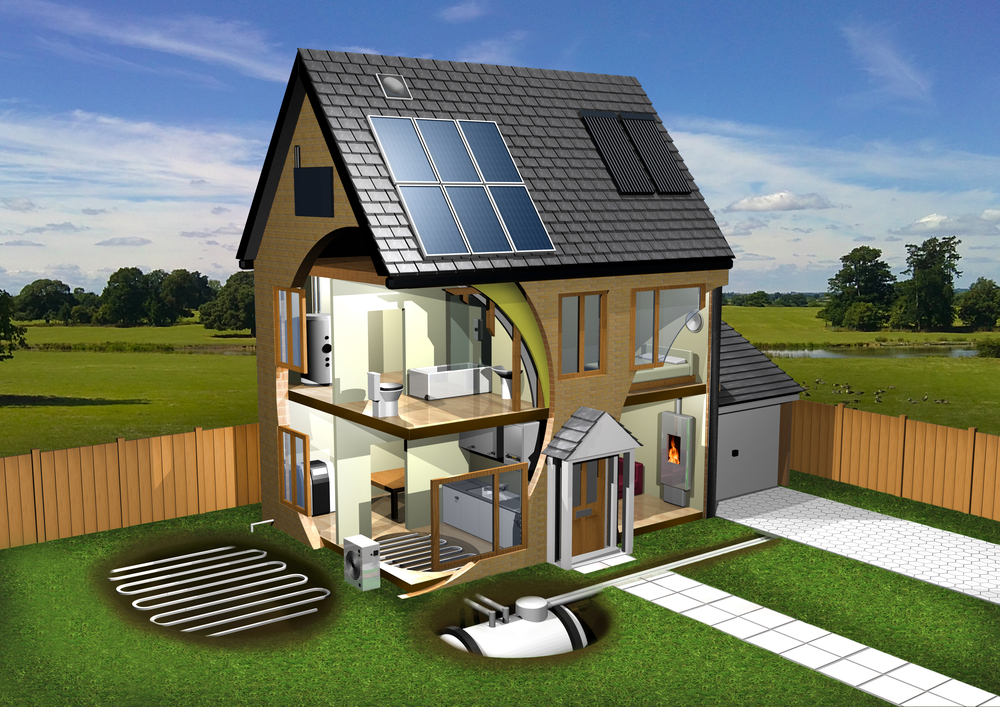News - Construction News
Green Technologies are the crucial jigsaw piece in realising Net Zero

The 2050 Net Zero target is a complex and difficult goal to hit, and it is going to take a vast array of solutions and fundamental changes to the way in which we operate across industry, services and life in general, says Peter Sayce, Chief Product Officer at Bramble Energy.
The development and implementation of green technologies will be paramount to securing a clean and sustainable future, helping organisations realise their net zero ambitions. Net zero refers to the balance of greenhouse gas emissions in our atmosphere. Given that carbon dioxide or CO2 is the main contributor, people often talk about zero carbon or a carbon reduction strategy, but greenhouse gases also include methane and nitrogen. Net zero means your operation emits no more greenhouse gases into the atmosphere than it removes, with removal recognising an operator may need to offset their emissions by planting trees or using carbon capture and storage.

Peter Sayce, Chief Product Officer at Bramble Energy.
Given the construction sector accounts for nearly 40% of global CO2 emissions, the IEA (International Energy Agency) estimates the sector needs to realise a 6% year on year reduction to achieve the 2050 target. This would be challenging for any sector, but the inherent characteristics of construction work make this even more difficult. This includes the greenfield nature of much of the work, challenges related to accessing clean power, the use of traditional materials, and the need to look at the whole life of an installation.
Whilst 2050 is regarded as being an ambitious target, most UK companies are still working out what it means for them and over what timescale.
Technology Innovation has started in the Construction Sector
Green technologies have a huge role to play in helping the construction sector to achieve Net Zero and the great news is we are already seeing a lot of positive examples where green technology can reach its full potential in decarbonising whole processes. There has been development in innovative and green materials, with zero carbon steel and concrete becoming more readily available. Battery, solar and hydrogen power are all increasingly viable alternatives to diesel generators and plant. We are seeing organisations like JCB announcing a massive £100M investment in new hydrogen engines. This is matched by a government commitment to increase UK hydrogen production to 5GW by 2030.
The UK Hydrogen Strategy set out plans to create a UK-wide hydrogen economy that could be worth £13Bn by 2050 and create up to 100,000 green jobs. This is based on hydrogen’s role in decarbonising high-energy industries, such as chemical and refining sectors, and its use as a fuel for off-highway and heavy transportation. This is clearly a massive leap, but initial steps are being taken. Toyota and Hyundai have passenger vehicles that are available today in the UK, and Vauxhall just announced a hydrogen-powered van that will be launched in 2023.
Plans for a multi-modal hydrogen transport hub in Tees Valley are underway with an initial government investment of £3M. Other sites have also been highlighted in the Thames Estuary, Immingham, Anglesey, Shoreham and Portsmouth and you’re able to catch hydrogen-powered buses in London, Birmingham, Aberdeen and Glasgow. These initiatives all aim to show the value of hydrogen as a fuel and are helping to build the supply chain. Perhaps as important, they are helping to build confidence and acceptance in hydrogen as a safe and effective energy medium.
The right incentives and the right technology will drive the market
Companies that are ambitious when setting Net Zero targets will be a driving force behind the adoption of green technologies. Clients will see through “greenwashing”, and construction companies can’t invest in green technologies “just for the sake of it.” Suppliers of green technologies need to offer the right solutions by understanding where their technology will be best placed to offer the most optimised solution for firms.
The technology must be right, which means the tech sector needs to deliver products that are authentic, affordable and provide a user experience that is at least the same as existing equipment, if not better. Of course, there needs to be more incentives to help with this. We’re already seeing some, like the use of green technologies being preferred in major tenders like HS2. This is happening in the UK and there are similar incentives for low-carbon solutions in other European countries. Such programmes will only increase as we get closer to 2050. There will always be a cost with introducing new technology and it will be necessary to see further incentivisation from the Government in levelling the playing field with existing technologies.
Market dynamics will also drive the adoption of green technologies. Some of this will be down to clients and shareholders who will increasingly demand the application of net zero or reduced carbon technologies on their sites. Companies that don’t adopt green technologies may become less competitive and will certainly see their market reduce as more clients see going green as paramount.
There is little doubt that the change will happen. The UK Government’s Net Zero strategy has set a number of targets that relate to green technologies, including the phasing out and replacement of gas boilers by 2035, the end of sales of new petrol and diesel vans from 2030 and all other non-zero emission vehicles by 2040, including HGVs. The shift to green technologies is happening, and its impact will be felt soon.
Keep asking the questions to get the answers
Green technologies can apply across the entire construction sector and throughout the whole lifecycle of a development. Their application can be from the very beginning, using small clean generators powered by hydrogen to provide zero carbon power for cameras, lighting and accommodation and can go to the very end, where you’re making use of sensors, control, and simulation technologies to make more informed decisions on the optimal building regeneration strategy.
The key is to constantly ask questions.
If you’re using equipment that is creating emissions or a material that you know is from a carbon-intensive process, then start exploring alternatives. If you’re unsure, start asking people. The magnitude of the task facing the construction sector is such that dialogue, education and collaboration will be key.
If you would like to read more stories like this, then please click here
Related Articles
More News
- SMEs remain unprepared as cyber threats escalate
19 Apr 24
SMEs neglect cyber security, making them easy targets for a wide range of attacks, including
- I&G to build new Rob Burrow Centre for Motor Neurone Disease
18 Apr 24
I&G has been appointed to build the new Rob Burrow Centre for Motor Neurone Disease
- Glasgow Ship Build Hall progress
17 Apr 24
Turner & Townsend has been appointed as the New Engineering Contract Project Manager to support






